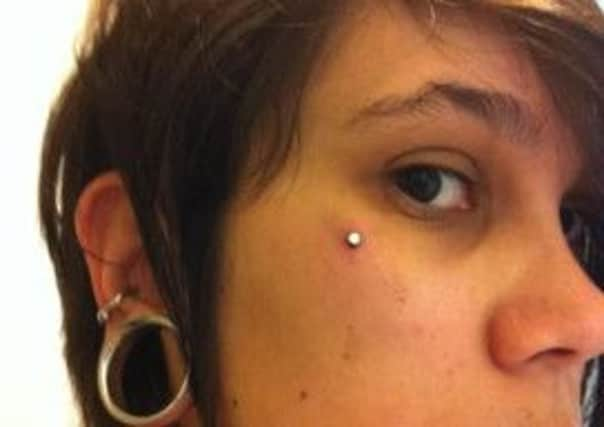Doctors warning on danger of sub-dermal piercings


Dermatologists meeting in Glasgow expressed concern that dermal anchors could cause pain in those who have the piercing, but also put a burden on the NHS when things went wrong and needed to be corrected.
The British Association of Dermatologists Annual Meeting at the SECC heard the case of a 29-year-old woman in Glasgow who had the piercing removed after it became embedded in the lower layer of skin, causing pain in her hand for nine months.
Advertisement
Hide AdAdvertisement
Hide AdDermal anchors consist of two main components - a flat plate which sits beneath the skin and a changeable piece of jewellery that sits on the surface, connected to a post attached to the plate which protrudes through the skin.
But doctors expressed fears about how the anchors are inserted into the skin, their safe removal and potential complications.
Insertion requires the use of either a scalpel, ski punch, or a piercing needle. The anchor must be placed deep enough to minimise the risk of the piercing moving, but not so deep that the skin begins to grow over the piercing.
Because local anaesthetic injections can only be given by those with a medical qualification, those undergoing the procedure have to do without, which has the potential to be very painful, the dermatologists warned.
Even once successfully administered, complications can occur. The conference heard in the event of something going wrong the NHS was “saddled with the burden” of treating those affected.
Dermatologist Dr Greg Parkins said: “If the popularity of this permanent body art continues to increase then so too will the number of patients seeking removal.
“This has potential health economic consequences, especially if patients are relying on removal of these implants on the NHS.
“It’s important that the public, medical professionals and those carrying out these piercings are aware of the dangers and difficulties associated with dermal anchors.
Advertisement
Hide AdAdvertisement
Hide Ad“Although local councils regulate businesses that insert dermal anchors through licencing, there is less clarity when it comes to guidance on how these devices should be removed, and by whom.
“The practice of clinical surgery without medical qualifications is a criminal offence in the UK. With dermal anchors the distinction between piercing and surgery is becoming less clear and I feel there are legitimate concerns over adequate training, hygiene and disease transmission.”
Matthew Gass, from the British Association of Dermatologists, added: “Dermatologists are not trying to dictate what people should and should not do with their bodies.
“However, it is important that they understand the long-term consequences of these piercings and the associated risks.”
SEE ALSO: